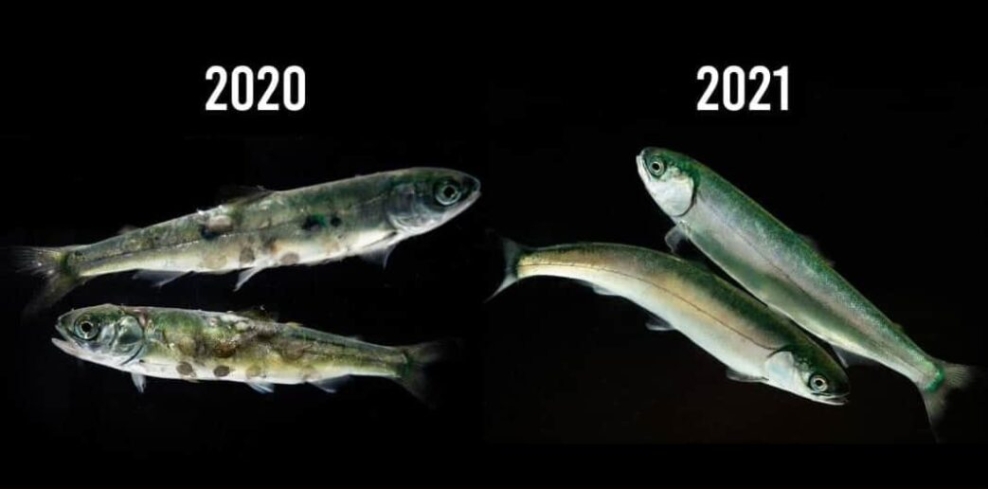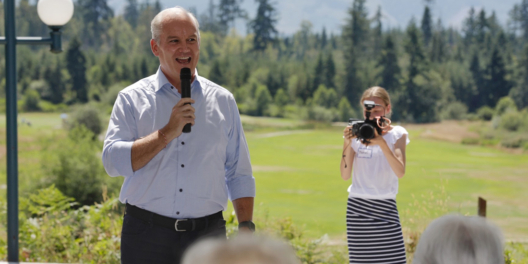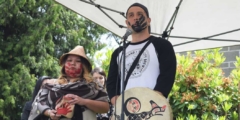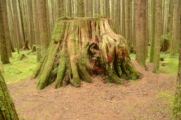In December 2020, Fisheries Minister Bernadette Jordan decided to phase out 19 factory fish farms in the Discovery Islands. The decision made a lot of people really mad. The big factory fish companies would lose money and their workers could be laid off. But those pens didn’t get restocked this year, and sea lice on wild salmon are down 90%.
Some local folks in the Discovery Islands have been studying sea lice on salmon for almost 20 years. They focus on the salmon in the Okisollo Channel because it’s basically a super-highway for salmon going back and forth to the Fraser River. They catch hundreds of small salmon every year and count the number of sea lice they’re carrying. The difference between last year and this year is remarkable.
In the past the wild juvenile salmon leaving the river around this time of year had a particularly tough time—the channel runs past four factory farms. The wild salmon would pick up lice and viruses when they were still small and not strong enough to fend off the bugs.
But why are there so many sea lice in fish pens?
Sea lice are like regular lice. If you have a couple of kids in a big house and one gets lice, you can kill the lice before the whole house is scratching their heads.
But put that kid in the kindergarten room with 20 more kids crawling all over each other and you’d better believe they’ll all have lice by the end of the week.
Only imagine the lice were as big as chickens. And those chickens figured out how to survive every lice shampoo in the drug store. That’s what it was like to be a juvenile salmon in the Okisollo.
But the wild salmon coming through the Okisollo this year are mostly lice-free.
They aren’t quite out of the woods yet.
They’ll still have to pass by the Chancellor Channel site off Johnstone Strait, and that site is in the middle of an outbreak.
Hopefully, though, the little fish will be strong and fast enough to make it to cleaner waters without getting too many bugs on their backs.










